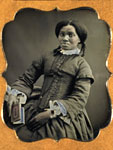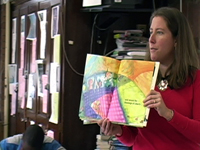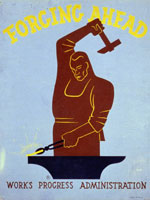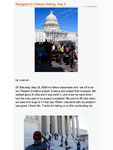Oregon: 11th-Grade Standards
(Note: By the completion of high school, Oregon students are expected to master the following standards.)
High school students study world and U.S. history from approximately 1900 to the present. They also consider the interrelationship of the levels and branches of government as they are involved in creating government policy. In Economics, students look at specialization, competition, and the creation of economic policy. They also investigate the risks of entrepreneurship, investment, and various economic policies and practices. Geography study includes using geographic representations to describe and explain resource use, depletion, and renewal, physical and climate change, population characteristics and migration, and cultural characteristics and change. Students use Social Science Analysis to fully explain issues, including the significance; to gather and analyze data; to view events, issues, or problems from varied and opposed perspectives, considering short- and long-term effects; and to reach refined, supported conclusions.
Civics and Government
-
Understand the origins, purposes, and functions of U.S. government, including the structure and meaning of the U.S. Constitution.
-
SS.HS.CG.01 Understand the purpose of laws and government, provisions to limit power, and the ability to meet changing needs as essential ideas of the Constitution.
- SS.HS.CG.01.01 Understand the "supremacy clause" of the U.S. Constitution as a means of resolving conflicts between state and federal law.
- SS.HS.CG.01.02 Understand the concept of judicial review as a means of resolving conflict over the interpretation of the Constitution and the actions of government.
- SS.HS.CG.01.03 Understand how to amend the U.S. Constitution and the Oregon Constitution, including how amendments may be introduced, what is required for passage, and how the process accommodates changing needs and the preservation of values and principles.
-
SS.HS.CG.01 Understand the purpose of laws and government, provisions to limit power, and the ability to meet changing needs as essential ideas of the Constitution.
-
Understand the organization, responsibilities, and interrelationships of local, state, and federal governments in the United States.
-
SS.HS.CG.02 Understand the interrelationship between local, state, and federal government.
- SS.HS.CG.02.01 Understand the primary function of federal, state, and local levels of government and how the actions of one influence the workings of the others.
- SS.HS.CG.02.02 Understand how federalism creates shared and reserved powers at each level of government.
-
SS.HS.CG.02 Understand the interrelationship between local, state, and federal government.
-
Understand the roles of the three branches of government and explain how their powers are distributed and shared.
-
SS.HS.CG.03 Understand how the branches of government have powers and limitations.
- SS.HS.CG.03.01 Understand how laws are developed and applied to provide order, set limits, protect basic rights, and promote the common good.
- SS.HS.CG.03.02 Understand the process by which laws are developed at the federal level, and key differences between how laws are developed at the federal level and in Oregon.
- SS.HS.CG.03.03 Identify and understand the powers and limits to power of the Presidency.
-
SS.HS.CG.03 Understand how the branches of government have powers and limitations.
-
Understand personal and political rights of citizens in the United States.
-
SS.HS.CG.04 Understand the role of the courts and of the law in protecting the rights of U.S. citizens.
- SS.HS.CG.04.01 Understand how the Bill of Rights offers protection of individual rights and how rights are limited for the benefit of the common good.
- SS.HS.CG.04.02 Understand the role of due process in the protection of individuals.
- SS.HS.CG.04.03 Understand how the rights of citizens have been augmented by case law decisions.
-
SS.HS.CG.04 Understand the role of the courts and of the law in protecting the rights of U.S. citizens.
-
Understand participatory responsibilities of citizens in the community (voluntarism) and in the political process (becoming informed about public issues and candidates, joining political parties/interest groups/associations, communicating with public officials, voting, influencing lawmaking through such processes as petitions/initiatives).
-
SS.HS.CG.05 Understand the civic responsibilities of U.S. citizens and how they are met.
- SS.HS.CG.05.01 Identify the responsibilities of citizens in the United States and understand what an individual can do to meet these responsibilities.
-
SS.HS.CG.05 Understand the civic responsibilities of U.S. citizens and how they are met.
-
Understand how government is influenced and changed by support and dissent of individuals, groups, and international organizations.
-
SS.HS.CG.06 Understand how government policies and decisions have been influenced and changed by individuals, groups, and international organizations.
- SS.HS.CG.06.01 Understand how U.S. political parties have influenced government policy and decisions.
- SS.HS.CG.06.02 Understand the causes, course, and impact of the civil rights/equal rights movements.
- SS.HS.CG.06.03 Understand the Constitutional changes that resulted from major events in the 20th century.
-
SS.HS.CG.06 Understand how government policies and decisions have been influenced and changed by individuals, groups, and international organizations.
-
Understand how nations interact with each other, how events and issues in other countries can affect citizens in the United States, and how actions and concepts of democracy and individual rights of the United States can affect other peoples and nations.
-
SS.HS.CG.07 Understand the purposes and functions of major international organizations and the role of the United States in them.
- SS.HS.CG.07.01 Understand and give examples of how international organizations influence policies or decisions.
- SS.HS.CG.07.02 Understand the purposes and functions of the United Nations, and the role of the United States in the United Nations.
- SS.HS.CG.07.03 Understand the purpose and function of international humanitarian agencies and special interest advocacy groups, and how the United States interacts with people in other nations through these organizations.
-
SS.HS.CG.07 Understand the purposes and functions of major international organizations and the role of the United States in them.
-
Analyze major political systems of the world.
-
SS.HS.CG.08 Understand how various forms of government function in different situations.
- SS.HS.CG.08.01 Compare and contrast how various forms of government function in similar and different situations.
-
SS.HS.CG.08 Understand how various forms of government function in different situations.
Economics
-
Understand that resources are limited (e.g., scarcity).
-
SS.HS.EC.01 Understand how specialization and competition influence the allocation of resources.
- SS.HS.EC.01.01 Understand how specialization increases efficiency, potential output, and consumer well being, but may have negative side effects.
-
SS.HS.EC.01 Understand how specialization and competition influence the allocation of resources.
-
Understand economic trade-offs and how choices result in both costs and benefits to individuals and society.
-
SS.HS.EC.02 Understand a cost-benefit analysis of economic choices.
- SS.HS.EC.02.01 Compare and contrast the allocation of goods and services in market and command economies.
- SS.HS.EC.02.02 Understand how people make decisions by analyzing economic conditions and changes.
-
SS.HS.EC.02 Understand a cost-benefit analysis of economic choices.
-
Understand how conditions in an economy influence and are influenced by the decisions of consumers, producers, economic institutions, and government.
-
SS.HS.EC.03 Understand how consumer demand and market price directly impact one another.
- SS.HS.EC.03.01 Understand that competition among sellers leads to lower prices and impacts production.
- SS.HS.EC.03.02 Understand that competition among buyers increases prices and allocates goods and services only to those who can afford them.
-
SS.HS.EC.03 Understand how consumer demand and market price directly impact one another.
-
Understand economic concepts, principles, and factors affecting the allocation of available resources in an economy.
-
SS.HS.EC.04 Evaluate different economic systems, comparing advantages and disadvantages of each.
- SS.HS.EC.04.01 Use cost-benefit analysis to compare and contrast economic systems.
-
SS.HS.EC.04 Evaluate different economic systems, comparing advantages and disadvantages of each.
-
Understand the role of government and institutions (i.e., banks, labor unions) in various economic systems in an economy.
- SS.HS.EC.05 Understand how government can affect the national economy through policy.
-
SS.HS.EC.06 Understand how government can affect international trade through tariffs, quotas and trade agreements.
- SS.HS.EC.06.01 Understand how government responds to problems in the economy (rapid inflation or rising unemployment) with fiscal and/or monetary policies.
- SS.HS.EC.06.02 Identify and give examples of ways that the U.S. government can affect the economy through legislation or policy decisions.
- SS.HS.EC.06.03 Identify tariffs, quotas, and trade agreements, and understand the consequences of their use on the economy.
- Understand the interdependence of the global economy and the role played by the United States.
-
SS.HS.EC.07 Understand the purposes and functions of major international economic organizations and the role of the United States in them.
- SS.HS.EC.07.01 Understand the purpose and function of international economic agencies and groups and how the United States interacts with people in other nations through these groups.
-
Understand how money makes it easier to trade, borrow, save, invest, and compare the value of goods and services.
-
SS.HS.EC.08 Understand how money makes saving and borrowing easier.
- SS.HS.EC.08.01 Understand how money functions in the banking system and as part of fiscal policy.
-
SS.HS.EC.08 Understand how money makes saving and borrowing easier.
-
Apply economic concepts and principles to issues of personal finance.
-
SS.HS.EC.09 Understand the potential risks and returns of various investment opportunities, including entrepreneurship, in a market economy.
- SS.HS.EC.09.01 Identify and give examples of potential incentives and disincentives of entrepreneurship.
- SS.HS.EC.09.02 Identify and give examples of potential risks and returns of economic decisions under various economic conditions.
- SS.HS.EC.09.03 Understand the risks and benefits to the use of credit.
-
SS.HS.EC.09 Understand the potential risks and returns of various investment opportunities, including entrepreneurship, in a market economy.
Geography
-
Understand the spatial concepts of location, distance, direction, scale, movement, and region.
-
SS.HS.GE.01 Understand and use geographic information using a variety of scales, patterns of distribution, and arrangement.
- SS.HS.GE.01.01 Understand the advantages and disadvantages of using various geographic representations to depict and solve geographic problems.
-
SS.HS.GE.01 Understand and use geographic information using a variety of scales, patterns of distribution, and arrangement.
-
Use maps and other geographic tools and technologies to acquire, process, and report information from a spatial perspective.
-
SS.HS.GE.02 Interpret and evaluate information using complex geographic representations.
- SS.HS.GE.02.01 Use a variety of geographic representations to analyze information and draw conclusions about geographic issues.
-
SS.HS.GE.02 Interpret and evaluate information using complex geographic representations.
-
Locate major physical and human (cultural) features of the Earth.
-
SS.HS.GE.03 Locate and identify places, regions, and geographic features that have played prominent roles in historical or contemporary issues and events.
- SS.HS.GE.03.01 Locate, identify, and explain changes in countries over time.
- SS.HS.GE.03.02 Locate and identify places and regions most prominent in contemporary events in Oregon, the United States, and the world.
-
SS.HS.GE.03 Locate and identify places, regions, and geographic features that have played prominent roles in historical or contemporary issues and events.
-
Compare and analyze physical (e.g., landforms, vegetation, wildlife, climate, and natural hazards) and human (e.g., population, land use, language, and religion) characteristics of places and regions.
-
SS.HS.GE.04 Analyze changes in the physical and human characteristics of places and regions, and the effects of technology, migration, and urbanization on them.
- SS.HS.GE.04.01 Apply geographic tools to identify change in a place over time, and to infer reasons for the change.
-
SS.HS.GE.04 Analyze changes in the physical and human characteristics of places and regions, and the effects of technology, migration, and urbanization on them.
-
Analyze the causes of human migration (e.g., density, food and water supply, transportation and communication systems) and it effects (e.g., impact on physical and human systems).
-
SS.HS.GE.05 Understand how worldwide transportation and communication patterns have affected the flow and interactions of people, ideas, and products.
- SS.HS.GE.05.01 Understand how transportation and communication systems of the present compare to those of the past, and how this changes perceptions of space and time.
- SS.HS.GE.05.02 Understand how communication and transportation technologies contribute to trade and cultural convergence.
-
SS.HS.GE.05 Understand how worldwide transportation and communication patterns have affected the flow and interactions of people, ideas, and products.
-
Understand economic, cultural, and environmental factors that influence changes in population, and evaluate the consequences of the resulting increases or decreases in population.
-
SS.HS.GE.06 Analyze and evaluate the impact of economic, cultural or environmental factors that result in changes to population of cities, countries, or regions.
- SS.HS.GE.06.01 Evaluate the consequences of economic, cultural, or environmental changes on a given population.
-
SS.HS.GE.06 Analyze and evaluate the impact of economic, cultural or environmental factors that result in changes to population of cities, countries, or regions.
-
Understand how people and the environment are interrelated.
-
SS.HS.GE.07 Understand human modifications of the physical environment and analyze their global impacts and consequences for human activity.
- SS.HS.GE.07.01 Distinguish between renewable resources and non-renewable resources and the global consequences of mismanagement.
- SS.HS.GE.07.02 Identify and understand different methods of extracting and using resources, and analyze and compare the effect on the environment.
-
SS.HS.GE.08 Identify and give examples of changes in a physical environment, and evaluate their impact on human activity in the environment.
- SS.HS.GE.08.01 Identify and give examples of changes in human activity due to changes in the physical environment, and analyze the impact on both.
-
SS.HS.GE.07 Understand human modifications of the physical environment and analyze their global impacts and consequences for human activity.
History
-
Historical Skills: Interpret and reconstruct chronological relationships.
-
SS.HS.HS.01 Reconstruct, interpret, and represent the chronology of significant events, developments, and narratives from history.
- SS.HS.HS.01.01 Reconstruct the chronological order of significant events related to historical developments.
- SS.HS.HS.01.02 Interpret the relationship of events occurring over time.
- SS.HS.HS.01.03 Interpret timelines, charts and graphs illustrating chronological relationships.
-
SS.HS.HS.01 Reconstruct, interpret, and represent the chronology of significant events, developments, and narratives from history.
-
Historical Skills: Analyze cause and effect relationships, including multiple causalities.
- SS.HS.HS.02 Compare and contrast institutions and ideas in history, noting cause and effect relationships.
-
Historical Skills: Understand, recognize, and interpret change and continuity over time.
- SS.HS.HS.03 Recognize and interpret continuity and/or change with respect to particular historical developments in the 20th century.
-
Historical Skills: Identify and analyze diverse perspectives on and historical interpretation of historical issues and events.
- SS.HS.HS.04 Understand how contemporary perspectives affect historical interpretation.
-
World History: Understand and interpret events, issues, and developments within and across eras of world history.
-
SS.HS.HS.05 Understand the causes, characteristics, lasting influence, and impact of political, economic, and social developments in world history.
- SS.HS.HS.05.01 Understand how innovations in industry and transportation created the factory system, which led to the Industrial Revolution and transformed capitalism.
- SS.HS.HS.05.02 Understand how the Agricultural Revolution contributed to and accompanied the Industrial Revolution.
- SS.HS.HS.05.03 Understand the concepts of imperialism and nationalism.
- SS.HS.HS.05.04 Understand how European colonizers interacted with indigenous populations of Africa, India, and Southeast Asia, and how the native populations responded.
- SS.HS.HS.05.05 Understand the major consequences of imperialism in Asia and Africa at the turn of the century.
- SS.HS.HS.05.06 Understand Japanese expansion overseas and the consequences for Japan and Asia during the 20th century.
- SS.HS.HS.05.07 Understand the impact of the Chinese Revolution of 1911, and the cause of China's Communist Revolution in 1949.
- SS.HS.HS.05.08 Identify and understand the causes and consequences of the Russian Revolution of 1917, and the impact on politics in nations around the world.
- SS.HS.HS.05.09 Identify and understand the causes and consequences of the Mexican Revolution of 1911-1917.
- SS.HS.HS.05.10 Identify and understand the causes of WWI and the reasons why the United States entered this war.
- SS.HS.HS.05.11 Understand the character of the war on the western and eastern fronts in World War I, and how new military technology contributed to the scale and duration of the war.
- SS.HS.HS.05.12 Understand how the terms of the Versailles Treaty and the social and economic challenges of the postwar decade set the stage for World War II.
- SS.HS.HS.05.13 Understand how the United States and other nations responded to aggression in Europe and Asia during the first half of the 20th century.
- SS.HS.HS.05.14 Understand isolationism and the military and economic mobilization of the United States prior to and during World War II, and its impact on American society.
- SS.HS.HS.05.15 Understand the character of the war in Europe and the Pacific, and the role of inventions and new technology on the course of the war.
- SS.HS.HS.05.16 Understand the systematic campaign of terror and persecution in Nazi Germany.
- SS.HS.HS.05.17 Understand the response of the world community to the Nazis and to the Holocaust.
- SS.HS.HS.05.18 Identify and understand the causes and consequences of the resistance movement in India.
- SS.HS.HS.05.19 Understand the division of Europe after WWII leading to the Cold War.
- SS.HS.HS.05.20 Understand the impact of the Cold War on individuals, groups, and nations.
- SS.HS.HS.05.21 Understand the causes and impact of the Korean and Vietnam Wars.
-
SS.HS.HS.05 Understand the causes, characteristics, lasting influence, and impact of political, economic, and social developments in world history.
-
U.S. History: Understand and interpret events, issues, and developments within and across eras of U.S. history.
-
SS.HS.HS.06 Understand how individuals, issues, and events changed or significantly influenced the course of U.S. history after 1900.
- SS.HS.HS.06.01 Identify and understand the effects of 19th century reform movements on American life in the early 20th century.
- SS.HS.HS.06.02 Understand the concerns, successes, and limitations of Progressivism.
- SS.HS.HS.06.03 Understand how new inventions, new methods of production, and new sources of power transformed work, production, and labor in the early 20th century.
- SS.HS.HS.06.04 Understand the changes in society and culture in the early 20th century.
- SS.HS.HS.06.05 Understand the causes of the Great Depression and the effect of the Great Depression on the American family.
- SS.HS.HS.06.06 Understand how the Franklin D. Roosevelt administration and the New Deal addressed the Great Depression, redefined the role of government, and had a profound impact on American life.
- SS.HS.HS.06.07 Understand the changes that created the economic boom after World War II.
-
SS.HS.HS.06 Understand how individuals, issues, and events changed or significantly influenced the course of U.S. history after 1900.
-
State & Local History: Understand and interpret the history of the state of Oregon.
-
SS.HS.HS.07 Understand the causes, characteristics, and impact of political, economic, and social developments in Oregon state history.
- SS.HS.HS.07.01 Identify and understand significant events, developments, groups, and people in the history of Oregon after 1900.
- SS.HS.HS.07.02 Understand the interactions and contributions of the various people and cultures that have lived in or migrated to the area that is now Oregon after 1900.
- SS.HS.HS.07.03 Consider and analyze different interpretations of key events and/or issues in history from the perspective of Oregon.
-
SS.HS.HS.07 Understand the causes, characteristics, and impact of political, economic, and social developments in Oregon state history.
-
State & Local History: Understand and interpret events, issues, and developments in the history of one’s family, local community, and culture.
- SS.HS.HS.08 Understand the causes, characteristics and impact, and lasting influence of political, economic, and social developments in local history.
Social Science Analysis
-
Define and clarify an issue so that its dimensions are well understood.
- SS.HS.SA.01 Define, research, and explain an event, issue, problem, or phenomenon and its significance to society.
-
Acquire and organize materials from primary and secondary sources.
- SS.HS.SA.02 Gather, analyze, use, and document information from various sources, distinguishing facts, opinions, inferences, biases, stereotypes, and persuasive appeals.
- SS.HS.SA.03 Understand what it means to be a critical consumer of information.
-
Explain various perspectives on an event or issue and the reasoning behind them.
- SS.HS.SA.04 Analyze an event, issue, problem, or phenomenon from varied or opposed perspectives or points of view.
-
Identify and analyze an issue.
- SS.HS.SA.05 Analyze an event, issue, problem, or phenomenon, identifying characteristics, influences, causes, and both short- and long-term effects.
-
Select a course of action to resolve an issue.
- SS.HS.SA.06 Propose, compare, and judge multiple responses, alternatives, or solutions; then reach a defensible, supported conclusion.





 That same year, an after-school group that is co-sponsored by myself and a friend from the National Park Service took a cross-country trip for Lincoln’s Bicentennial. I created another blog for the students to document their adventures and for friends and family back home to be able to find us. What was nice was that because I had been working with the blog in history class, my students were aware of how a blog works and were familiar with how to write for it and their audience. Each student was required to write three times for the blog during the course of our week-long adventure. Each night after our full day they would write on either paper or share the two laptops we brought for blogging. Before going to bed each night I would upload any remaining blog entries. The system proved effective for sharing our adventures and for students documenting their days. The site has also become a great way for Jen Epstein, my National Park Service co-organizer, to share what she is doing in schools for outreach. View it here:
That same year, an after-school group that is co-sponsored by myself and a friend from the National Park Service took a cross-country trip for Lincoln’s Bicentennial. I created another blog for the students to document their adventures and for friends and family back home to be able to find us. What was nice was that because I had been working with the blog in history class, my students were aware of how a blog works and were familiar with how to write for it and their audience. Each student was required to write three times for the blog during the course of our week-long adventure. Each night after our full day they would write on either paper or share the two laptops we brought for blogging. Before going to bed each night I would upload any remaining blog entries. The system proved effective for sharing our adventures and for students documenting their days. The site has also become a great way for Jen Epstein, my National Park Service co-organizer, to share what she is doing in schools for outreach. View it here: 